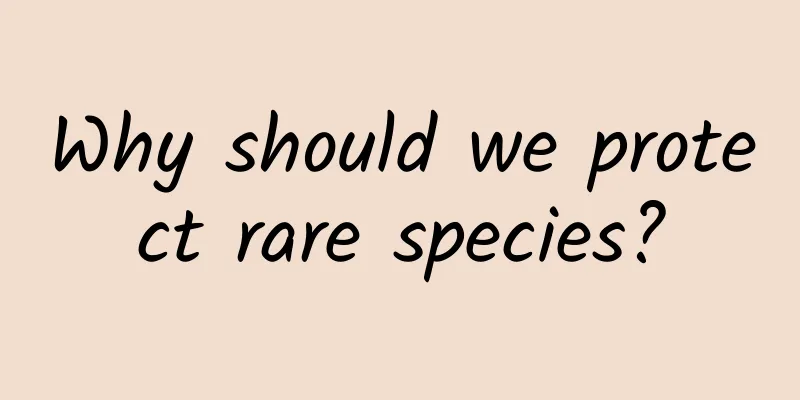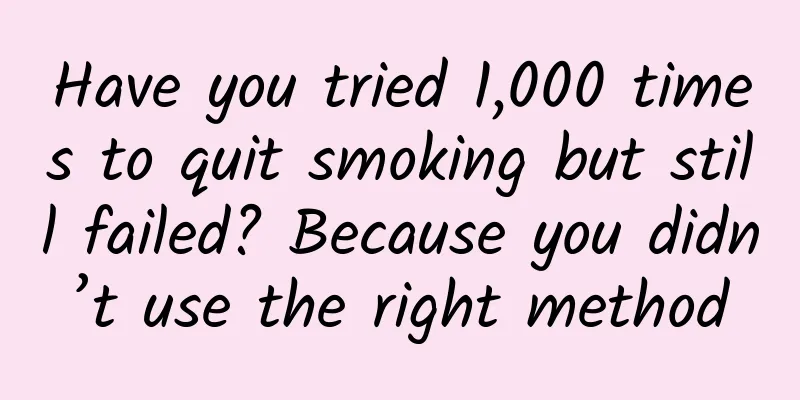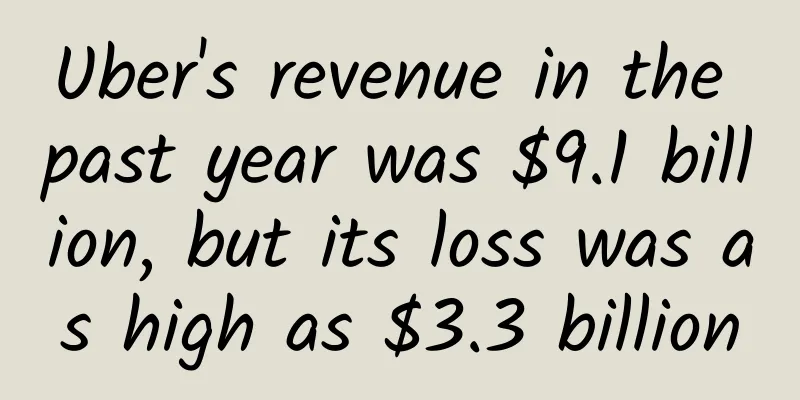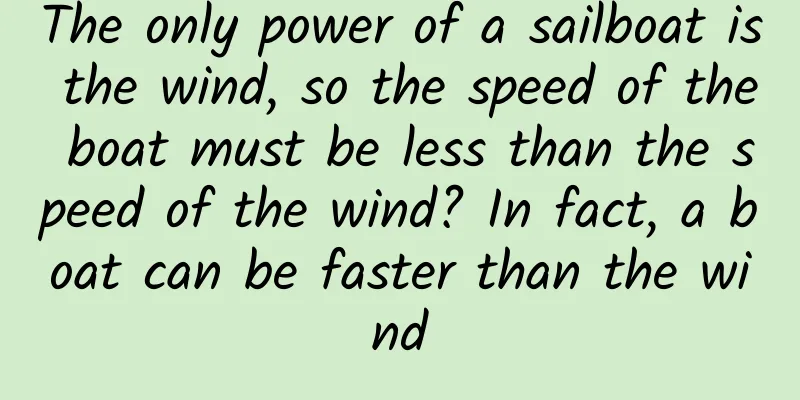Why should we protect rare species?

|
A penguin wanders around the empty parking lot of a restaurant in Cape Town, South Africa, in April 2020. The restaurant, located on Cape Town's famous Boulders Beach, was closed at the time due to the outbreak of the epidemic. © Rodger Bosch Leviathan Press: In April 2021, the documentary "The Year Earth Changed" was officially released. In this newly released film, goats in Wales walk in groups on empty sidewalks, deer in Nara nibble on grass by the roadside, and humpback whales in Alaska finally jump out of the water again in the quiet sea... All this happened during the global lockdown caused by the epidemic. Animals have emerged with new activity patterns because humans stay indoors. This makes us rethink our relationship with the planet we live on. We have too many reasons to let rare species fend for themselves. In the mass extinction that occurs every 75 million years on average, only 5% of species survive each time. This means that 98% of the 50 billion species of life that have ever existed on Earth have long since decayed into oil, fossils, or a wisp of smoke. © Divaneth-Dias/Getty In the long run, any rare species that we try so hard to protect today will eventually disappear in time. The inevitable death is a tribute to all life, treating everyone equally. The extinction of individual species, the demise of a phylum, and even the destruction of an entire ecosystem are the most common events in the history of biology - or, in other words, the things that are most in line with the laws of nature, and saving them is only delaying extinction. Secondly, species extinction is a powerful driving force for evolution. Natural selection uses this mechanism to eliminate species with weaker adaptability, allowing more tenacious organisms to thrive. From ancient times to the present, the last-place elimination is a natural law that has never changed. Some scholars predict that due to the existence of plate movement, Europe will collide with Africa in 50 million years to form a new supercontinent, and this change will irreversibly destroy a large number of species. But on the other hand, new species will also be born one after another. Only by eliminating those species that are not suitable for continued survival and have reached an evolutionary dead end can resources be freed up for more potential new species to appear. A fossil of a trilobite that lived 430 million years ago and is thought to have the first eyes in all life. © vistaalmar Furthermore, species conservation is a time-consuming, labor-intensive, and extremely expensive undertaking: According to calculations, the cost of saving endangered species can be as low as $145,000 for the White River spinyfin, or as high as $153.8 million for the loggerhead and green sea turtles (a recovery plan covering both species). According to a 2012 study, the global expenditure on protecting endangered terrestrial animals alone is as high as $76.1 billion a year (including expenditures on curbing hunting and establishing protected areas), and the investment in bird protection around the world is more than $65 billion. The expenditure on marine life protection may be even higher. (science.sciencemag.org/content/338/6109/946) The United Nations IPBES (Intergovernmental Science-Policy Platform on Biodiversity and Ecosystem Services) estimated in 2019 that nearly 1 million species on the planet will face extinction in the coming decades, and the cost of saving these species from extinction will be astronomical. If these resources were tilted towards solving water and famine problems, how many lives could be saved? (ipbes.net/global-assessment) Given the enormous costs of protecting species, we don’t even know how many species go extinct each year. Biologists can’t even agree on how many species there are on the planet—even now that we can estimate the number of stars in the Milky Way. So far, we have officially recorded about 1.5 million species of life on Earth in scientific literature (most of which are insects). According to a 2017 study, there should be as many as 2 billion species waiting for us to discover in the world. Another study in 2016 gave an even more exaggerated estimate through data modeling - 100 billion to 1 trillion. (phys.org/news/2017-08-biodiversity-earth.html) (www.livescience.com/54660-1-trillion-species-on-earth.html) This means that even if a large number of creatures become extinct, we humans will know nothing about it because they have never existed in the human knowledge framework. Only very rarely does the last remaining member of a species die in a zoo or other similar institution—in other words, within human sight, as happened with the last passenger pigeon, Martha, and the last Panamanian golden frog. Panamanian golden frog. © Brian Gratwicke In most cases, we don’t know whether a species is truly extinct in the strict sense, and even when a single species dies in public, it’s hard to be sure it’s truly extinct. Therefore, scientists are always very cautious when announcing whether a species is extinct - if it is announced too early, all rescue efforts will stop, leading to the actual extinction of the species, which is vividly called the "Forbidden fruit effect." Unfortunately, no matter how cautious we are, we cannot prevent rare species from dying out one after another in places far from humans, without reports or witnesses. It is difficult to say whether a tree falling in an uninhabited forest will make a sound, but we can be sure that they will eventually return to dead silence. The number of species we know of is already a minority of the total number of species, and endangered species are even a minority of the minority. This inevitably makes people wonder whether such a large-scale investment in conservation work can bring enough meaningful returns. EO Wilson, a Harvard entomologist who first coined the term "biodiversity" in 1985, described the extinction of species as a "huge and hidden" tragedy. As a bystander of this tragedy, humans can't help but feel sympathy for these endangered or extinct species, especially those that are extinct due to human factors. The last male northern white rhino, photographed in 2015. © Make/Stuart Price But even so, following morality is probably not an absolute reason to protect biodiversity - after all, those people who shout "all living things have the right to survive" every day probably don't hope that the smallpox virus will make a comeback. So do we really need to spend hundreds of billions of dollars every year trying to save species that are doomed to extinction, while appeasing our own compassion (or guilt for profiting from other species only to drive their extinction)? If this is not a good deal, why should we save species that are at risk? Fortunately, the case for protecting endangered species is more compelling than leaving them to die out—even if we exclude arguments such as “satisfying compassion”. * * * For humans, the natural ecology is first and foremost a natural pharmacy. Among the 150 most frequently used prescription drugs, more than half of the active ingredients originally come from plants or other natural products. For example, the most common amoxicillin comes from penicillin in Penicillium. The anti-cancer drug paclitaxel has an extremely complex chemical structure (some researchers have admitted that it is difficult to produce through artificial design), but before its unique effects were discovered, the brevifolia yew tree that contains paclitaxel was cut down and made into wood. If these organisms disappear before their unique chemistry is discovered, their secrets will be lost with them. Paclitaxel is an anticancer drug derived from the bark of the yew tree. © Walter Siegmund/wiki Antibiotics, anticancer drugs, painkillers, anticoagulants... Nature provides us with many drugs that we rely on for survival. Each organism represents a unique treasure trove of genetic material that has evolved over millions of years, but the plants we have studied for medical purposes only account for about 5% of the total known plants. It is conceivable that if we continue to study those species to be discovered, how much will be gained for human medicine. A similar situation occurs in the food industry. Former US President Thomas Jefferson once said: "No greater contribution can be made to a nation than the addition of a useful plant, especially a bread grain, to its culture." It is estimated that there are about 80,000 edible plants for humans, and less than 20 of them feed 90% of the world's population. We are almost living in a huge "natural granary". With their indisputable medicinal and edible value right in front of us, these species that are "useful to humans" will naturally receive human attention and protection. But what are pandas for? They can't be eaten or used as medicine, so why do we still protect them? Is it just because they are cute? From a certain perspective, this is true. © giphy In 2018, scientists made their first quantitative assessment of the conservation value of giant pandas as China's flagship endangered species - spending $255 million on giant pandas each year can bring a generous return of $2.5 billion. (www.sciencedirect.com/science/article/pii/S0960982218306821) This includes the appreciation of soil and hydrological resources due to the protection of giant panda habitats, as well as the improvement of cultural values such as tourism, aesthetics, branding, and education. In addition, according to data from the China Statistical Yearbook, between 2000 and 2010, the annual income growth rate of farmers living near giant panda reserves in Sichuan, Shaanxi, and Gansu was 8% higher than the average of their respective provinces. Protecting giant pandas not only means protecting other creatures protected by the species and the land they live on, but also means considerable income from cultural products such as tourism and commodities, which can be further fed back into conservation work. The round animals bring hard economic benefits, and it is not impossible for humans and other species to achieve a win-win situation. As early as 1997, the famous ecological economist Robert Costanza, together with 13 scientists, estimated the value created by global ecological protection. They believed that the returns brought by global ecological protection work that year were 33 trillion US dollars, nearly twice the global GDP that year. Twenty years later, in 2017, Costanza calculated the figure to be $12.5 billion. In contrast, leaving species to fend for themselves is a very bad idea. According to a study published by the United Nations in 2010: If not controlled, the continued decline of species will shrink global economic output by 18% by 2050. Protecting the ecology no longer means curbing economic development, but can generate income instead. (www.bbc.com/news/business-11606228) © giphy So even from a utilitarian point of view, we should protect endangered species because they can be used by humans. Does that mean we can eliminate those "harmful species" such as flies, mosquitoes, cockroaches... or at least, we should let them fend for themselves? But the reality is that even the extinction of "harmful species" may in turn harm humans themselves. For example, herders in West Africa hate lions because lions not only eat their livestock, but sometimes threaten their own safety. This has led to a traditional sports event in their daily lives: catching lions. On the other hand, lions are important predators of baboons, and can naturally and effectively control the number of local baboons. Once lions are cleared out too much, the number of baboons will increase sharply due to the reduced threat of predation, and eventually invade human villages with a large number of parasites in their intestines to snatch water and food, causing various parasitic infections to local herders. The question of whether lions or parasites are more terrible will never have a one-sided answer. The only solution is to establish an ecological environment where humans and lions can coexist safely. The Visayan Warty Pig, which lives in the Visayas Islands in the Philippines, may not be as striking as the panda, but it is still in urgent need of protection. © wiki Does that mean we should kill off the parasites? Obviously not. Once the parasites are eliminated, the number of baboons will inevitably increase rapidly, and the number of lions will also increase rapidly as food becomes easier to obtain, thus placing an additional burden on humans. This is a simple "pool filling and draining" problem, except that our goal is no longer to empty or fill the pool, but to keep it filled with water without overflowing. For the millions of species sharing the same planet, any species has already evolved its unique functional role, and they are all water in the same pool. It is true that the ecology has always been in a state of dynamic stability. Even if half of the species become extinct tomorrow, the existing ecosystem will simply enter another state of dynamic stability - it's just that the price we need to pay in this process is difficult to measure - and the premise is that humans are not among the half that become extinct. In the long run, every species will inevitably have an impact on the ecology, and a good ecology will inevitably benefit all species, including humans. * * * © theofy In the 1980s, Americans enclosed an area of 1.27 hectares (less than the size of two football fields) in the barren desert of Arizona to run a romantic and radical experiment, Biosphere 2. The experiment was designed to explore whether humans were capable of living a self-sufficient life in an independent, closed ecosystem in a limited small space. Biosphere 2 consists of seven biome areas: artificial ocean, wetlands, desert, miniature rainforest... Temperature-controlled water circulates through an independent pipe system, panels covering most of the facilities absorb solar energy, and the natural gas energy center can produce electricity in a centralized manner. Once the experiment is successful, humans will have the technical support and strong confidence to build an independent ecosystem in the interstellar environment. The moon, Mars, and even drifting space stations can be transformed into places suitable for human habitation. In this way, humans will get rid of their dependence on "Biosphere 1" - the earth, and move forward to the stars and the sea. Carl Hodges, a scientist at the University of Arizona, commented that it would become "the most important scientific project in history", and the American Broadcasting Corporation hinted that it might "save the world". On the morning of September 26, 1991, eight experimenters waved goodbye to the media cameras, walked into Biosphere 2 and closed the valve. Eight staff members involved in the experiment and the sealed module behind them. © Tim Roberts/AFP/Getty Images In the original plan, they intended to stay there until September 26, two years later. Unfortunately, most ideals are only replaced by skinny reality. In just the first few months, continuous cloudy days greatly hindered the growth of crops, forcing them to open emergency granaries to obtain food. Later, due to the proliferation of oxygen-eating bacteria in the soil, the oxygen concentration in the circle once dropped to 14.5%, which was as thin as a plateau at an altitude of 4,080 meters. The design defects of drainage made the desert humid, and ants and cockroaches multiplied in large numbers. Hummingbirds and bees died one after another, and crops could not be pollinated... Due to the small size of Biosphere 2, the unexpected and environmental variables it could carry were extremely limited, and the fluctuations in the ecology occurred faster and more drastically than in the outside world. After 6 months, the experiment had to end in failure. After extensive research and optimization of the system, the experimenters restarted their second attempt on March 6, 1994. However, within a month, the project went into bankruptcy administration due to disputes within the management team. Biosphere 2 was ultimately defeated by human nature. This project, which was praised as "the most exciting scientific project undertaken by the United States since the moon landing" at the beginning of its establishment, was eventually evaluated as "pseudo-scientific new era nonsense". The interior of Biosphere 2. © Jasper Nance Modern people are more powerful than any other human beings in the past. They can go deep into the seabed, fly into space, clone life, and connect via radio waves. It is no exaggeration to say that human civilization is on the road to becoming a "god". But what is extremely disproportionate is that our bodies have rarely changed. The high level of development of modern civilization is not because we have become smarter, but the result of the accumulation of generations of human intelligence. Our brain capacity is not much different from that of our ancestors who ate raw meat and drank blood. Like them, we have to take in water and food, breathe air, repeat the cycle of birth, aging, sickness and death, and live with all other species in Biosphere No. 1. Medicinal, edible, tourism and cultural development... We can maintain the ecological balance for any practical purpose, but we can never ignore or deny the fact that human beings rely on the ecology of this planet at all times. The failure of Biosphere 2 once again verified this reality: so far humans have not been able to simulate an ecological environment similar to that of the Earth, nor can they survive independently of the existing ecosystem - perhaps what we should think about is not how to break away from the existing ecology, but how to benefit from the blue planet while living in harmony with the ecology we are in. By Tesoro Proofreading/Rabbit's Light Footsteps This article is based on the Creative Commons License (BY-NC) and is published by Tesoro on Leviathan The article only reflects the author's views and does not necessarily represent the position of Leviathan |
<<: After skiing a few times, I was addicted!
>>: Snowflakes are all hexagonal, and each one is unique. Why? | Xian Shuo Ba Dao
Recommend
Ten years after my grandpa passed away, I used AI to "resurrect" him
I used my grandfather’s written records and audio...
Can air fryers produce carcinogens? How to use them healthily
In recent years, many families have bought air fr...
They studied anal breathing in mammals not to win an Ig Nobel Prize, but to save lives
Produced by: Science Popularization China Author:...
2-Minute Coding Tip: Don't Use Loops in Your Code
Instead of writing for or while loops, you should...
The game is so small that it is less than 1KB
As games get better and better, their size also i...
What are the reasons that cause Baidu to repeatedly include and delete website articles?
I believe that all responsible webmasters will en...
"UFO"? Don't be afraid, it's a weather balloon!
Maybe one day when you are walking on the road an...
Orange Is the New Black All 7 Seasons HD English Subtitles
Chinese name: Women's Prison Foreign name: Or...
Panasonic's new air purifier F-655FCV is available first
Since last year, the air purifier industry has sh...
Cooking food without heating it? It's possible...
If we are very hungry and have only a piece of ra...
Case analysis: The confusion of an O2O product manager!
The theory is boring. After reading it, I just fe...
What should I do if my hands feel sore after cutting peppers? How to prevent spicy food from getting on your plate?
Many people feel their hands are very hot after c...
A comprehensive article on user retention!
Faced with the current situation of difficulties ...
How difficult is it to produce the blue fireworks in the TV series "Nothing But Thirty"?
In the TV series “Nothing But Thirty”, “blue fire...









